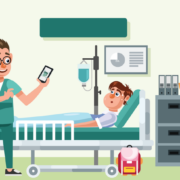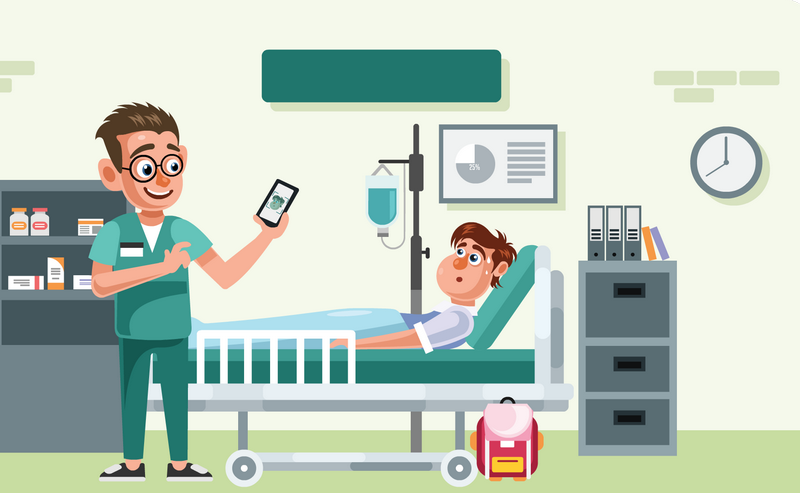Can hospitals achieve better patient outcomes through patient engagement tools?

Let’s face it – no patient thinks about going home and logging into a web portal. It is ancient at this point. During a recent event focusing on all things related to healthcare improvement, that was the opinion shared by a respected healthcare official. The rest of the executives from different healthcare systems who were participating with him nodded in agreement. On the contrary, they laughed, because they are accepting the fact that patient portals are just not practical. Not only for this small group of officials but by now, it is common knowledge that such patient portals did not turn out to be one of the effective patient engagement tools as they were once hoped to be. Where did it go wrong? What’s next? If this didn’t push patient engagement, what kind of patient engagement tool will? These are the questions on the minds making up the healthcare system.

During the event, the group sat down and had a lengthy discussion regarding healthcare and patient engagement tools, and the following are some of the critical things that were revealed.
Patient engagement is of utmost importance
This was stated by all of the executives present. Patient engagement is one of the top three organizational objectives for them. They also believe the fact that their organization’s value patient engagement as they see patients who are more participative to have better health outcomes than those who don’t, along with increased satisfaction, retention, and revenue.
Priorities are not reflected in the results
Another notable finding during this discussion was that there is a massive difference between the amount of importance healthcare systems place on patient engagement and the level of results they deem successful – they interpret 15% as a good number. One may then ask, how can such a vast difference between objectives and results be possible? One official from a healthcare system said that they need to be completely digital regarding everything being done in their hospital – from the moment the patient decides to use their services until the follow-ups are complete. Naturally, they require a patient portal which the healthcare providers have, and they observe approximately 15% of patient engagement through it, which they believe is more than an acceptable number.
Even though considering such a small number as success is very peculiar, it is not uncommon. The Office of the National Coordinator for Health Information Technology states that less than one-third of the patients who had access to portals used it only one or two times per year. The ones who did not use the portals had a variety of reasons – they wanted to speak with their healthcare providers directly, did not deem it necessary enough to view their records online, were worried about the safety and privacy of the portals, or could not use them due to various issues.
Not enough advancements in patient engagement tools
The healthcare officials who were present in the event think that the motivation for effective patient engagement needs to come from the patients themselves. However, as the findings specified already, it is not always in the hands of the patients themselves, but in the hands of the healthcare providers – the latter are the ones who develop the patient engagement tools, strategies, and technologies to support them. For instance, no matter how participative a patient is willing to be, he/she will not be able to effectively engage with the healthcare provider if the patient portal is complex, faulty, or inefficient. Another drawback the officials stated was the perception of patients regarding the portals’ contents and features – if they were inconsistent and irrelevant, patients would not use them.
Another official added that even though patient engagement is a top priority for any healthcare system, the ones running them do not utilize the tools available to make better use of technology and come up with something more innovative and productive than patient portals. They do not invest in the necessary places and do not hire the people who can bring about a change to patient engagement tools.
Is patient engagement actually possible?
Yes, of course. Patient portals may be clunky, complicated, and the fact that people use their browsers less nowadays does not help the matter. No, the solution lies somewhere else. People are always on their phones using apps, and this is the key – a patient engagement app like CircleCare. The patients do not need to go to browsers and sign in; all they need to do is unlock their phones and tap on the app – they are in! CircleCare is an app which helps the patient stay fit – it can track their steps, schedule alerts for their medicine, and record their blood glucose level as well as their blood pressure, thus, helping them to stay proactive and maintain a healthy lifestyle. Not only that, but the app also connects the patients with their physicians so that they can communicate with each other whenever required – to share critical information, updates, tips, and additional information regarding their health can be exchanged. Once the hospital subscribes to the app, all the patients need to do is download it and use it, which will not only help them maintain a healthy lifestyle, but also ensure active patient engagement, and as a result, hospital readmission rates will go down due to better patient outcomes and active patient engagement.




















